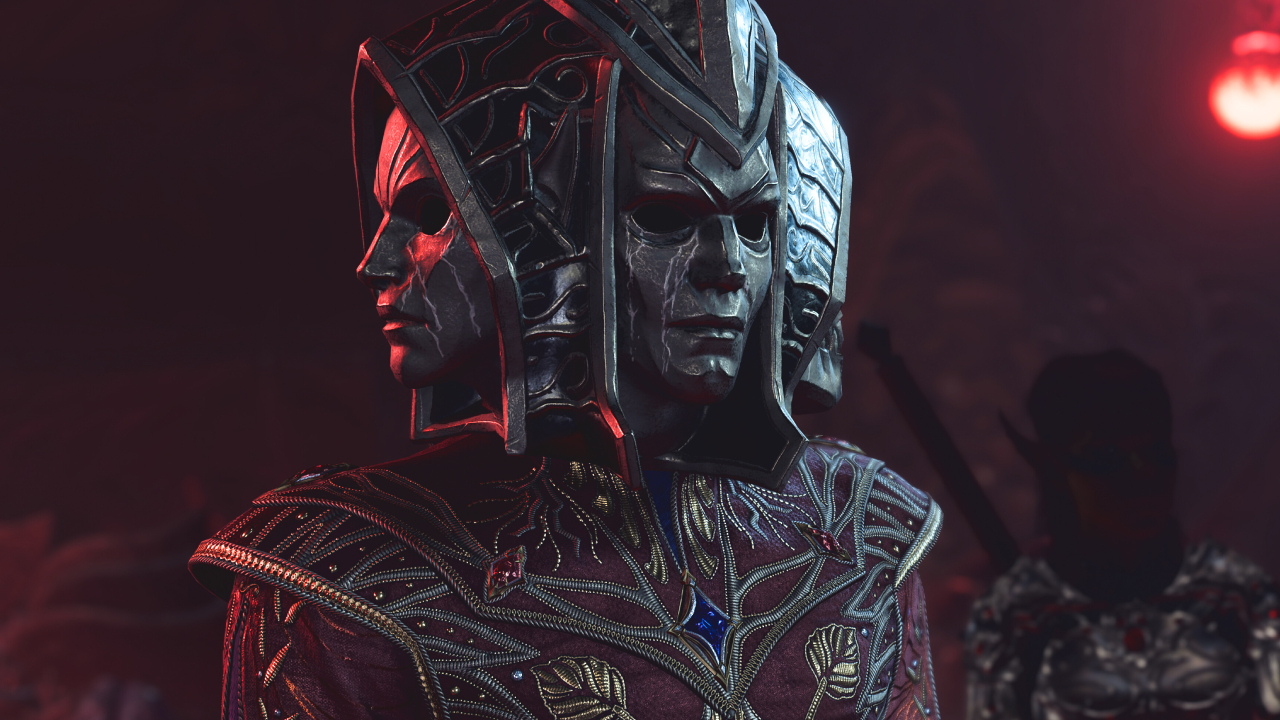In the small hours of the morning, with my wife and child safely tucked in bed, and sleeping away the cool night, I am no longer a mild-mannered tech journo. I am the half-elf Magpie. Gentleman assassin with a heart of gold, and only one rule.
Growing up as an urchin on the plague-ridden undertow of Baldur’s Gate, I have seen all the terrors that Faerûn has to offer. The Sword Coast is a dark place, filled with death, but also life. It is equal parts vibrant, and dangerous. A child is lured by a beautiful melody to the water’s edge where harpies await, bellies rumbling. A bugbear and an ogre have fallen in love and myself and my party have just stumbled upon their nest of passion.

What follows is what always follows. Blood soaks the sands, and tinges the waters. I guess the harpies wiped me again. This is like the third time. I’ll just reload and do this encounter again when I have a barbarian in my party that is immune to mind-altering magic.
Rogues are excellent because backstab does huge swathes of damage, and the Assassin subclass gives you even more opportunities to perform them. I eagerly await every level gained. I sense the power of my party growing, but my enemies grow stronger as well. Every corner I go, every abandoned home, every dark forest has something to offer. I find myself purposefully avoiding the beaten path, and looking for rocks I can climb, or ledges to jump on.
A random water well. Maybe I can find some treasure at the bottom. What’s that? I climb down the bucket rope pursuing a shiny morsel (as my name indicates I love gold) and an entire multi-level dungeon filled with phase spiders and ettercaps just so happens to be down here. Well, there goes another three hours of my life, I guess.
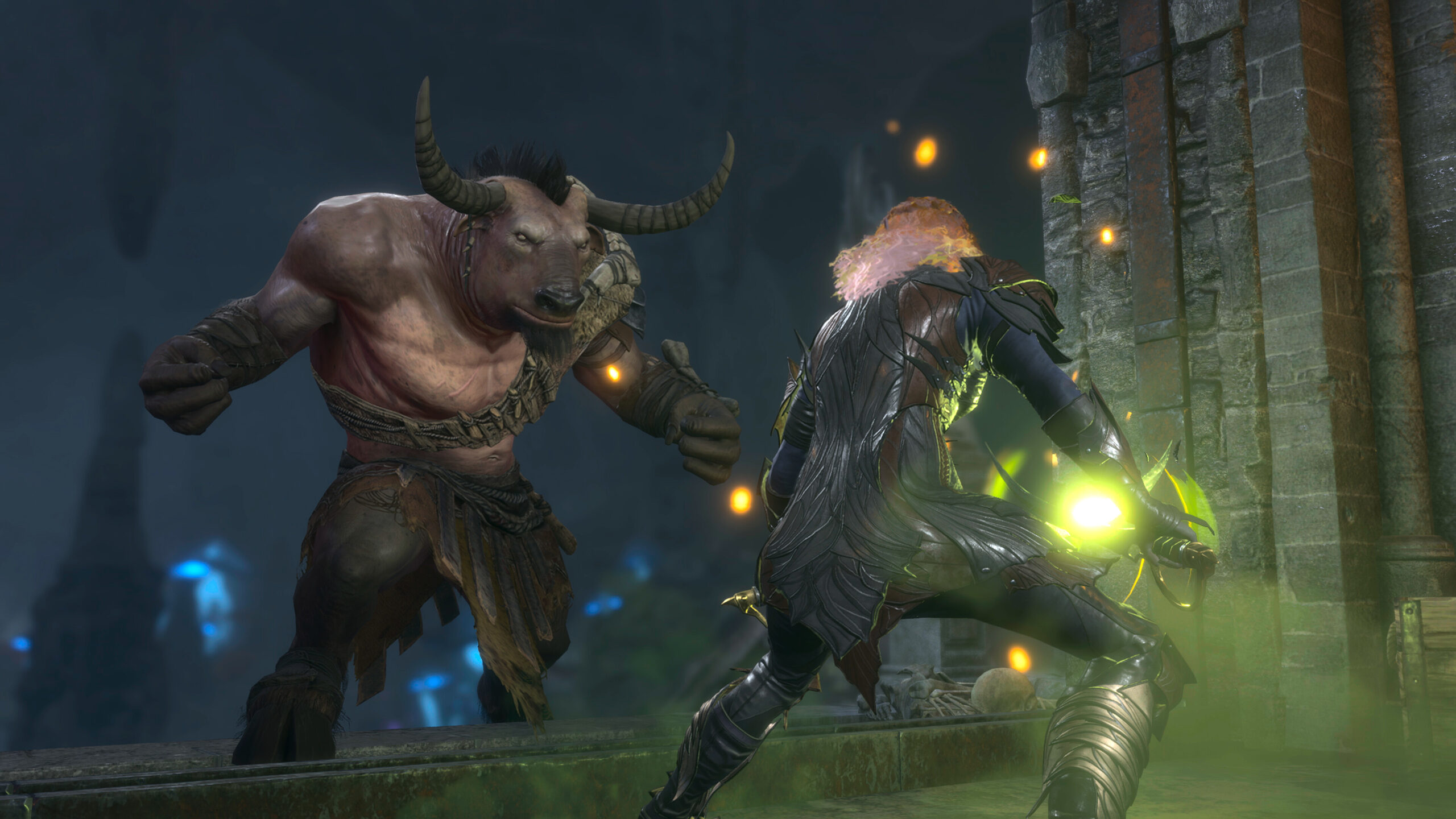
There is so much “do whatever the hell you want” in Baldur’s Gate 3 that it is intimidating. We are so conditioned as gamers to look out for cues, or follow the path the way the developers have designed it – green means progress, white chalk on the ledge means you can climb up – that when confronted by a true sandbox, we are paralysed by the possibilities. Opening your mind and trying to push the limits of the system always gets you something worthwhile.
The fact that Larian Studios have managed to do this, as well as managed to cram in exceptional writing, strategy-intensive turn-based combat, immersive sound design, impressive character animation via motion capture, seamless exploration and a deep, interwoven layout of gameplay paths and story beats all while nailing the essence of Dungeons and Dragons tabletop roleplaying all wrapped in authentic love and care for the source material, and the previous games in the series is a feat unlike any before.
Rather than try wrap my tiny brain around how they managed it, I try to focus on just playing more. It is a rare thing when every time you hop on Baldur’s Gate 3 you just have a great time. There are seemingly no pauses in the exceptional quality of the game. It transports you. Takes you on a journey that keeps making me feel like I am playing one of the role-playing game classics. Something really special.
That feeling you get when playing The Witcher 3, and the wind howls. Or when the music swells as the Normandy thunders through the Omega 4 Relay on its run towards the Collector ship and certain suicide.
Goblins have infested this abandoned village – “Moonhaven” the dulcet tones of the omniscient narrator tell me. The first time I tried this, I walked right into the main gateway, and right into an awaiting ambush.
The Goblin shaman’s shrill laughter warned me to turn back, but like a fool, I threatened it. Then for the next ten minutes I watched powerless as my party, stunned by surprise, were killed one by one by barbed arrows from goblin archers stealthed on the nearby roofs.
Not this time, baby. Reload. Shadowheart, the cleric I saved from the Illithid ship, managed to see the goblin ambush ahead via one of the many passive roles that are performed as your party explores the world. I moved my group past the gateway, and up a ledge hidden in the bushes. The goblin archer sat looking out into the trees never foresaw my dagger, laced in poison, piercing her back.
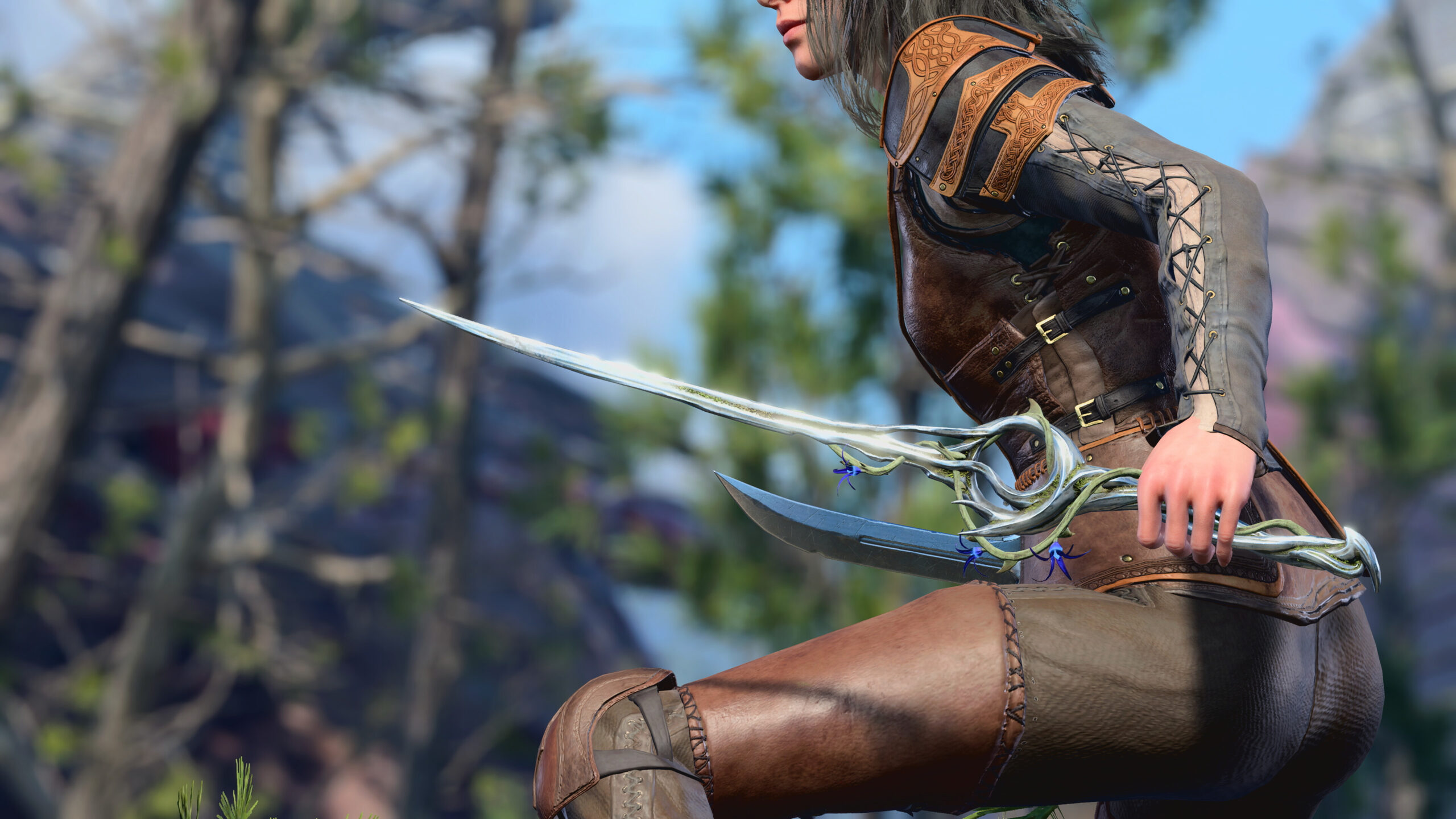
I scored two critical hits in a row with one backstab, and crushed 23 hit points in one fell swoop. My god do I feel like a badass. Jump to five seconds in the future and I have failed my next stealth roll, easily getting caught by another goblin. However, the goblin’s head burns with a strange sigil, and one of the possible things I can say has [Illithid] next to it – I have been infected with a Mind Flayer parasite, it’s a whole thing, too long to tell.
The alien worm in my cranium squirms as I use powers I never knew I had to mind control this lesser creature. How Larian implemented this. What amounts to subtle prods to tap into the monster growing within you, how they leave it for moments when you need to get out of a bind or help out a person in trouble, is brilliant game design. You won’t even notice as it slowly overtakes you.
It creeps into and over your mind, just like Baldur’s Gate 3. I find myself thinking idly about new builds, new characters. It isn’t just the gameplay. It’s not the numbers so much. It’s the roleplaying possibilities. For a turbo nerd like myself who spent his formative years daydreaming about characters, their backstories, relationships, experiences and how these shaped their personalities, the game sees the dreaming come to virtual life. The reactivity of the world created by the developers is neurotically exhaustive.
Depending on your playthrough, the things you spend your time doing will fetch different and unique reactions from the NPCs. Playing as a Drow will rightfully illicit racist reactions from characters on the surface world, because in the lore, the Drow are stereotyped as greedy and evil.

However, if you play a half-Drow, you will receive disparaging remarks on the surface world, and in the Underdark where the Drow call home. This isn’t even taking into account all the race and class-exclusive dialogue options you receive throughout the game.
Gale, the wizard from Waterdeep – did you know the demonym for Waterdeep is “Waterdhavian,” weird huh? – told me he trusts me enough to share more about his condition. He says that now, because of how I defused an argument earlier, he has seen me to be an upstanding person. In a previous playthrough of an ill-fated Tiefling paladin, he told me it was my courage that made him trust me because I saved a prisoner from the executioner’s bolt.
So you’re telling me if I didn’t do either of those things, Gale would have a completely different reason to trust me, accompanied by a new line of dialogue? The amount of replayability on display is something new. A new echelon for a virtual living breathing world, one that reportedly has other studios sweating bullets. A near-perfect playground for coming up with your own stories, something that Larian thankfully took from the game’s predecessors.
In the centre of the dank crypt, the vast room is oppressively overtaken by a huge stone coffin. The top of which is inlaid with gold finery, and the death mask of a hero long since dead. I fail a perception check, but luckily two of my party members succeed. The coffin is trapped. My curiosity takes the better of me and with soft step, and sleight hands befitting a peddler of the clandestine arts, I move to disarm it.
It’s time to roll the dice, and take part in one of the newest innovations to RPGs. The dice roll mechanic simulates actually playing the tabletop version of Dungeons and Dragons. You will be rolling the d20 in all speech checks, all cinematic actions, every time you pick a lock or, like myself right now, try to disarm a trap. The dice rocks against the top of the UI. Surely with all my modifiers, my high dexterity and my rogue skills this will be a piece of cake.
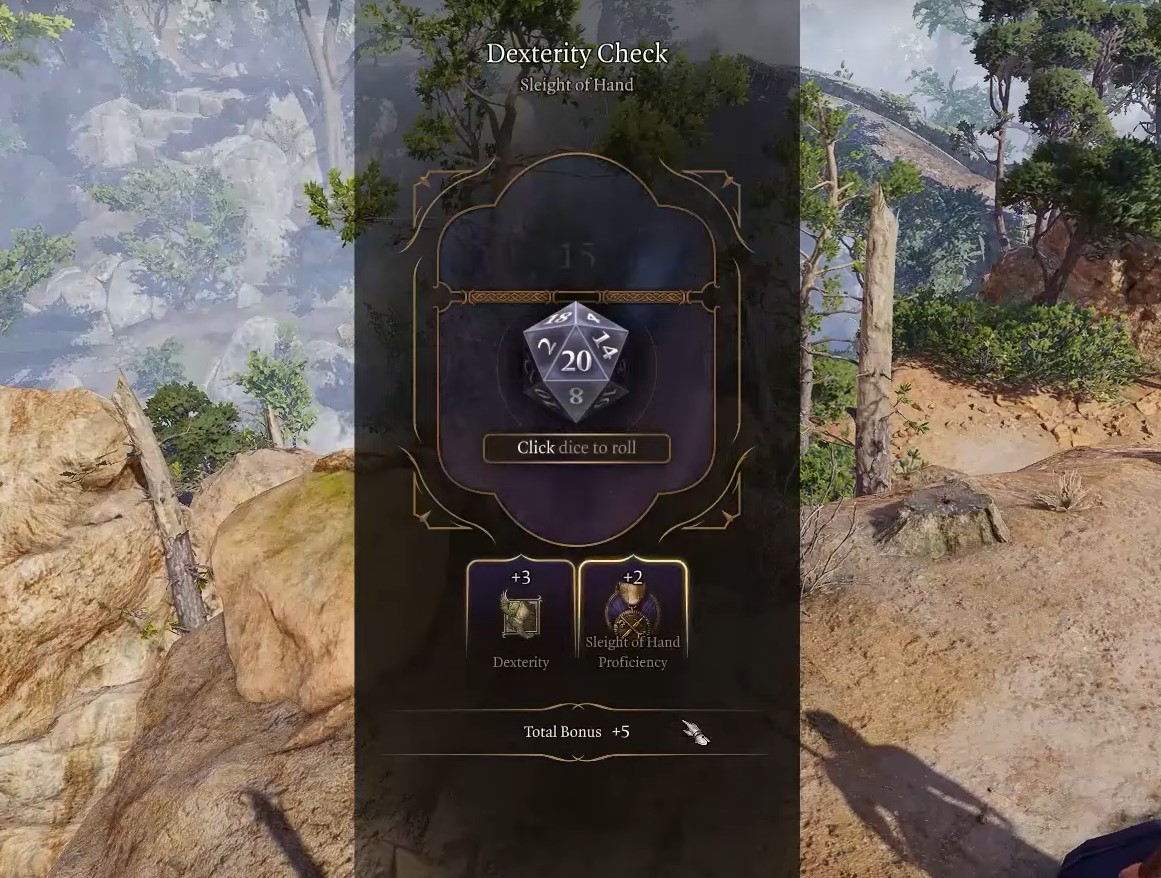
“Critical Miss” flashes red on the screen. I have rolled 1. The four sides of the coffin erupt in flamethrowers. Fire spews out from vents on the ground. The crypt becomes an oven, and my party is the crispy, crispy turkey. There is no way to survive this. When the game was still in early access, I saw the dice rolling mechanic and thought it would just slow down gameplay and have no inherent value other than being a gimmick for fans of the tabletop game.
I was wrong. The dice-rolling mechanic now has me gripping my chair. My knuckles white in anxiety. I once audibly said “Yes!” when I succeeded in an important persuasion check. Thank God I play Baldur’s Gate 3 in the dark by myself.
We’re back at camp. When playing on Tactician, because Dark Souls has turned me into a masochist for vicious but fair gameplay, you will have to rest often. Long rests make sure your wizards and clerics get their spell slots back. Your fighters will be able to perform their strongest attacks again. Resting also lets you get to know your party members. Usually, as you adventure and explore they will have something to add, and each has their own opinions on the way you are leading them around. But the quiet and still of camp is where voices drop low, and secrets are revealed.
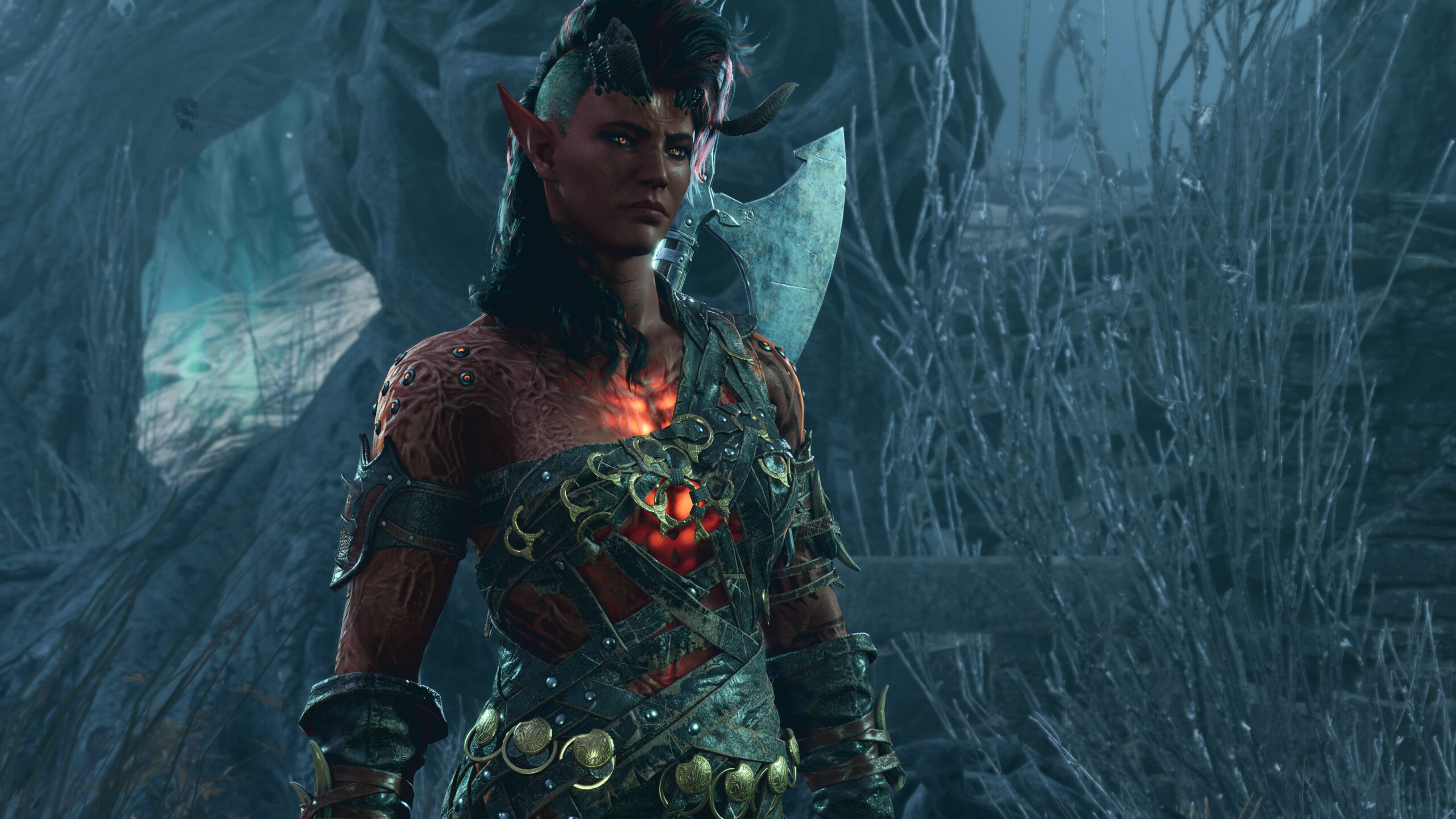
I ask Shadowheart about the spike-strewn artefact she keeps hiding from me. She dodges my questions until, eventually I try to be smooth and witty as only a man about town who calls people “love” can. It backfires and it ends up making her upset. It takes all I have to not reload my save and picking less confrontational options. Every companion has been a hit so far in my playthrough. Their voice acting. Their writing. When you expect to hate someone, they just somehow manage to crawl past your defences.
Astarion, the blood-thirsty rogue, would be annoying if he wasn’t so damn charismatic. Lae’zel has hidden depths and despite being terrible to me, I only want good things for her in her life. Her tales early on of Githyanki conquering worlds among the stars stuck with me. This is some A+ stuff, I thought. Her introduction, flying through the air alongside a red dragon, is one of the reasons why I don’t mind restarting the game with a new character so much. I have done so eight times already. There will be more.
Baldur’s Gate 3 – Final Verdict
Baldur’s Gate 3 keeps going and going. There is constantly something new to behold. A new story to dive into. New characters to save, or destroy. New enemies to help you reach level 12, and new dungeons to test your freshest spells and skills in.
The finding of colour-coded loot a la World of Warcraft continues to pop my serotonin. There is no holding this game back. I could go on and on. Throwing synonyms for “great” out about its main storyline, or about the companion side quests. Or about all the little intricacies that are just a joy to behold.
When all is said and done, Baldur’s Gate 3 will be regarded as one of the best RPGs ever made. It will be considered superior to its predecessors and as a new standard for how these games should be. Larian has put forth a triumph of the genre, one that will tickle old diehards and attract new fans.
As hotfixes for bugs flow fast from the developers, and thoughts turn to what’s next in the guise of DLC for level 13 and onwards, I sit and watch from my street corner in the city of Balduran, beautifully uplifted through modern graphics. Where to next for me? Maybe I should roll that dwarf barbarian I’ve been thinking about and take it all from the top.
FINAL SCORE: 10 OUT OF 10.
[Image – Steam]

